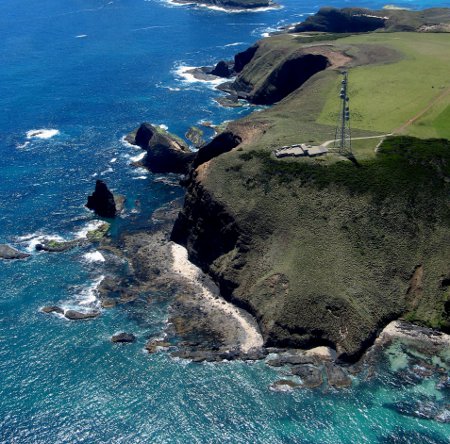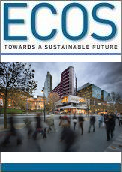
|
Published: 10 October 2011
Rate of global plant carbon uptake and release revised
A new insight into global photosynthesis – the chemical process governing how ocean and land plants absorb and release carbon dioxide (CO2) – will assist scientists to more accurately assess future climate change.

|
|
Researchers traced the passage of oxygen atoms in CO2 molecules through plants and the atmosphere by combining historical CO2 data sets from around the world. Credit:
ScienceImage/CSIRO
|
In a recent letter to Nature, a team of United States, Dutch and Australian scientists reported that the global rate of photosynthesis occurs much faster than previously thought.1
From analysing more than 30 years of data collected by Scripps Institution of Oceanography and air samples collected and analysed by CSIRO and the Bureau of Meteorology from the Cape Grim Air Pollution Monitoring Station, the scientists were able to estimate the mean rate of photosynthesis over several decades.2
The data analysis also enabled the scientists to identify the El Nino?Southern Oscillation phenomenon as a regulator of the type of oxygen atoms found in CO2 from the North to the South Poles.
‘Our analysis suggests that current estimates of global gross primary production are too low,’ says co-author, Dr Colin Allison, an atmospheric chemist at CSIRO. ‘The refinements we propose represent a new benchmark for models to simulate carbon cycling through plants.’
Dr Allison says a critical element of the research was access to long data sets at multiple locations, such as Cape Grim, Mauna Loa and the South Pole. The data sets extend back to 1977, when Cape Grim was established, and include more recent samples from facilities in locations such as Christmas Island, Samoa, California and Alaska.

|
|
The Cape Grim Air Pollution Monitoring Station in Tasmania abuts the Southern Ocean and is the primary southern hemisphere facility observing atmospheric change. Credit:
Bureau of Meteorology
|
The study, led by Scripps’ Dr Lisa Welp, traced the path of oxygen atoms in CO2 molecules. This enabled researchers to deduce how long the CO2 had been in the atmosphere and how fast it had passed through plants.
From this information, the researchers estimated that the global rate of photosynthesis is about 25 per cent faster than previously thought.
‘It's difficult to measure the rate of photosynthesis for forests, let alone the entire globe,’ says Dr Welp. ‘For a single leaf, it’s straightforward; you just put it in an instrument chamber and measure the CO2 decreasing in the chamber air. But, you cannot do that for an entire forest.
‘What we have done is to use a naturally occurring marker – an oxygen isotope in atmospheric CO2 – that allows us to track how often it ended up inside a plant leaf. From oxygen isotopic CO2 data collected around the world, we can estimate the mean global rate of photosynthesis over the last few decades.’
In related studies, analysis of water and oxygen components found in ocean sediments and ice cores have provided scientists with a 'big picture' insight into carbon cycling over millions of years.
Dr Allison says understanding the exchange of gases such as CO2 and water vapour in the biosphere – the oceans, land and atmosphere – is especially significant for climate science and climate policy, because of its relevance to the global management of carbon emissions.
‘Quantifying this global production – centred on the exchange of growth-promoting CO2 and water vapour – has been historically difficult, because there are no direct measurements at scales greater than leaf levels,’ says Dr Allison.
‘Inferences drawn from atmospheric measurements provide an estimate of ecosystem exchanges, and satellite-based observations can be used to estimate overall primary production. But as a result of this new research, we have redefined the rate of biospheric carbon exchange between atmosphere, land and ocean.’
‘These results can be used to validate the biospheric components included in carbon cycle models, and although still tentative, may be useful in predicting future climate change.’
The Nature paper authors say the new estimate of the rate of global photosynthesis will also help guide other estimates of plant activity, such as the capacity of forests and crops to grow and fix carbon.
CSIRO's Dr Roger Francey is a co-author of the published research, which was led by Scripps' Drs Welp and Ralph Keeling.
1 Welp LR, Keeling RF, Meijer HAJ et al. (2011). Interannual variability in the oxygen isotopes of atmospheric CO2 driven by El Niño. Nature 477, 579–582. Published online 29 September 2011, doi:10.1038/nature10421
2 The Cape Grim station provides vital information about changes to the atmospheric composition of the southern hemisphere. The facility, funded and managed by the Australian Bureau of Meteorology, detects atmospheric changes as part of scientific research jointly supervised by CSIRO's Marine and Atmospheric Research and the Bureau.



